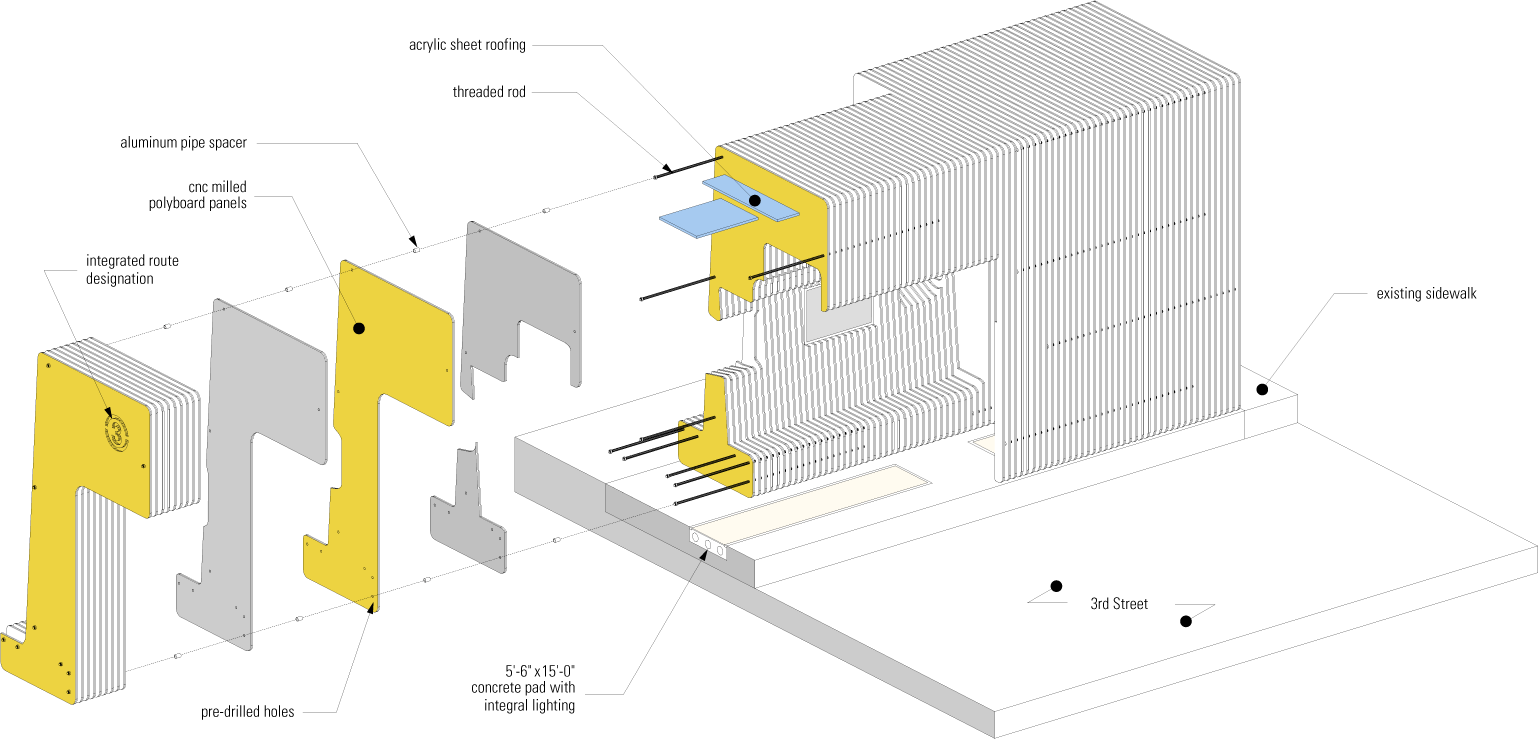Bloomington Bus Shelter
Bloomington, IN, USA • 2002

Biomechanical needs of people waiting for the bus establish a unique and recognizable look for a system of bus shelters.
The shelter unit forms respond to specific biomechanical needs of people waiting for the bus, while also establishing a unique and recognizable look for the entire system. Structures are assembled from a series of colored, pre-cut panels made entirely of recycled material.
Individual panels are constructed from a strong, inexpensive, recycled plastic material called Polyboard, which is completely weather-proof and does not need painting or finishing. The panels are pre-cut using computer-controlled CNC milling machines, then delivered to the site for quick assembly.
Each one-inch thick panel is composed of two half-inch thick sheets of material; yellow on one side and gray on the other. Two-color panels allow the shelters to appear to change color as the viewer moves past the shelter, providing a visual sensation of speed and movement.
Interior and exterior profiles of the shelters are defined by edges of the panels themselves, eliminating the need for additional seating or structural elements. Each structure was sculpted using a systematic analysis of the positions and habits of bus riders, including calculated windows and view angles, seating areas, and standing room zones.
DESIGN TEAM
Jordan Parnass
Greg Merryweather




